In an era where businesses face stiff competition and need to run several campaigns to stay afloat, bad copywriting sometimes gets published. Sadly, poor-quality copy is costly and can do irreparable damage to a brand. How do you identify bad copywriting?
Examples of bad copywriting include copy with inconsistencies, poor formatting, vague taglines, complex sentences, grammatical errors, and boring stories. Poor-quality copy is a huge turn-off to the audience. A number of brands have made these mistakes, and the results have been devastating.
In this post, we will evaluate several brands that made various mistakes in their copy. This often results in a loss of revenue, as well as a damaged reputation. Sometimes the best thing to do is to identify bad copy so you can avoid it in your own work.
10 Bad Copywriting Examples With Valuable Lessons
1. The Use Of Vague Taglines
Taglines are an effective way to make sure your brand is memorable and stays at the front of your audience’s minds.
But creating amazing taglines takes a lot of creativity and time. Top brands, like Nike and Apple, have some of the greatest taglines in history.
Our example below is a tagline from Lexus which simply states, “experience amazing”. This tagline leaves the reader with more questions than answers.
One cannot help but wonder what it is that they will experience. This brand’s tagline message is unclear and confusing because it does not tell the reader exactly what they are going to experience.
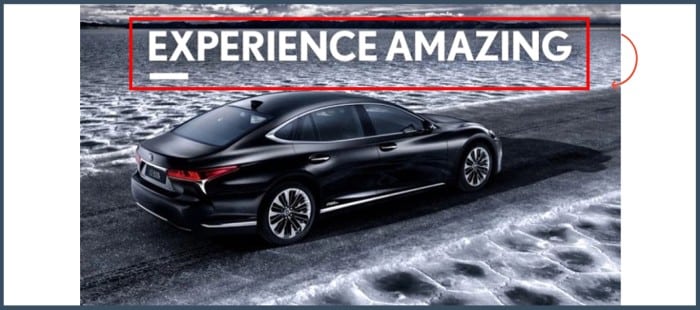
Lexus’s tagline fails because it does not communicate what the brand believes in. For instance, when Nike uses the tagline “just do it’ it’s a motivation for its audience to keep going.
The tagline works because it reflects Nike’s belief in athletes. “Experience Amazing” does not tell us much about what Lexus stands for.
Another tagline failure comes from Deliveroo. The company falls short with its tagline because it fails to honor grammar rules. The tagline is “eat more amazing.”
First, the brand uses an adjective in place of a noun. To make it worse, they amplify the word “amazing” by using more. This is unnecessary because if something is amazing, it’s amazing and that is it.

After some time, the brand revised the tagline and came up with a new slogan: “Restaurant food, takeaway, and groceries. Delivered “

Even though this new tagline does not break grammar rules like the first one, it’s not much better. It’s not memorable and it’s not enticing.
2. Poor Formatting
Properly formatting your text is fundamental when it comes to writing copy that converts. Bad copywriting uses poor formatting.
This combination creates boring text that is difficult to read. It is an issue because a lot of online readers just want to be able to skim through simple text instead of big walls of text.
In the example below, the writer may have done a great job describing a product but they forgot to format it to enhance readability.
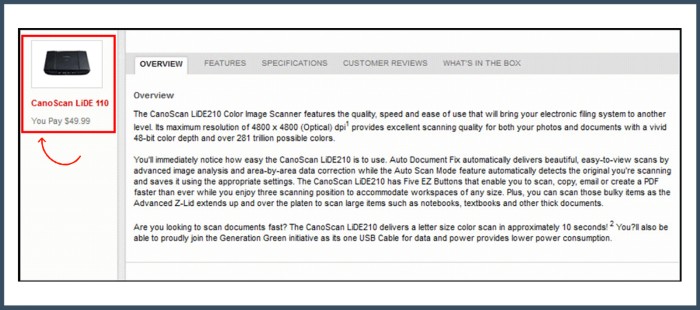
Cannons’ product description above could immensely benefit from using various font styles such as bold or italics and dividing the content into subheadings.
It would also help if they used bullet points to make their lists easier to read.
3. Grammatical Issues
Grammar errors are one of the most common mistakes that bad copywriters make. Although they do not do this intentionally, sometimes an error can go unnoticed and make it into the final product.
It doesn’t matter if the error was made unintentionally; an error is an error, and the audience will see it. As such, it’s crucial to go through your copy and fix any grammar issues before publishing it.
For example, it’s clear that Dr. Pepper’s copywriter failed to pay attention to the red line showing an error in grammar.
So, they posted the ad without correcting the error. Unfortunately, the error did not go unnoticed by the audience, who pointed it out in the comment section.
Bad grammar is just one of the reasons why copywriters fail. To know several other reasons, read my article on what causes a lot of copywriters to fail?
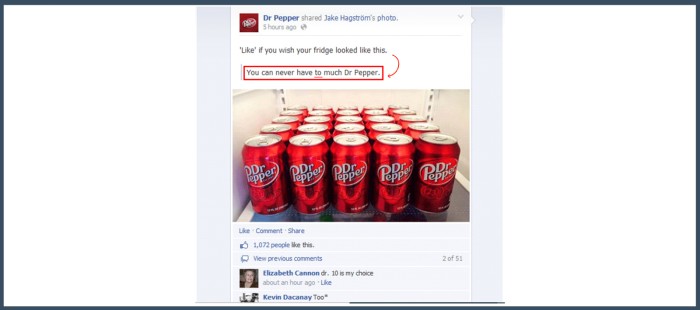
While making mistakes is not uncommon, you can easily avoid them by using grammar-checking software and having other people go through the copy before publishing it.
4. Running Ads That Run On Prejudice And Stereotypes
Capitalizing on trends and emotions is a great way to get more people to read your copy and take action. However, when you do this wrong, it can make your copy backfire.
For instance, some brands used the COVID-19 pandemic to advertise their products to drive more sales. Kent RO is one of the companies that used COVID-19 fear to promote their products.
The brand ran an ad to get people to buy its atta and bread-making machines by stating that allowing domestic workers to knead the dough by hand could lead to COVID infections.
This ad came off as offensive because it labeled domestic workers as unhygienic. The advertisement angered customers who perceived it as outright discrimination against domestic workers.
Consequently, a domestic rights workers’ organization in Karnataka called for a boycott of all of Kent’s products.
Ads like this may get attention, but in all the wrong ways. Try to view your copy through the eyes of readers so you can avoid hurtful language or insinuations.

5. Using Out-Of-Context References
Using references in copywriting is a great way to make the content more relatable.
The problem arises when copywriters use references that no one can relate to, like the reference that Mashable made in one of their ads.
The brand is trying to refer to a gif pronunciation debate, which they try to reference with a newsletter they’re promoting called “click click click.”
This is absurd because it leaves the reader wondering what the copy is all about. It fails to clearly show what the brand is offering.
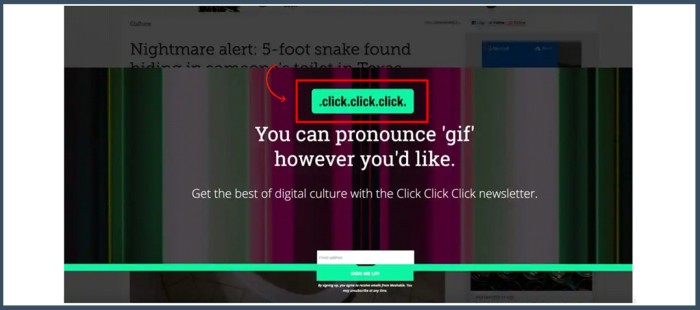
The headline of this copy is a random debate about how to pronounce the word GIF.
This headline is not attention-grabbing because the pronunciation of the word GIF is not something that can add value to the reader.
The headline is followed by a completely unrelated body of copy that talks about a digital culture newsletter called Click Click Click.
Unless they’re in on the debate, most readers will be left wondering how many ways there are to pronounce GIF and how that pronunciation relates to the newsletter.
Because it’s confusing, most readers are likely to leave the page rather than sign up. If they can’t understand the landing page, the newsletter will not be something they’re interested in.
Bottom line, references are only great if they make sense within the context of the copy.
6. Using Complex And Overly Long Sentences
Readers have limited attention spans and tend to overlook information that appears difficult to understand.
They interact more if the information is presented in a simple, clear, and concise manner. As such, it helps to use simple sentences that are not too long.
It’s best to limit or avoid long sentences that present too much information because they leave readers feeling confused and uninterested.
For example, iMEDIA Connection uses long sentences with several pieces of information at once. Look at one of their sentences in the image below.
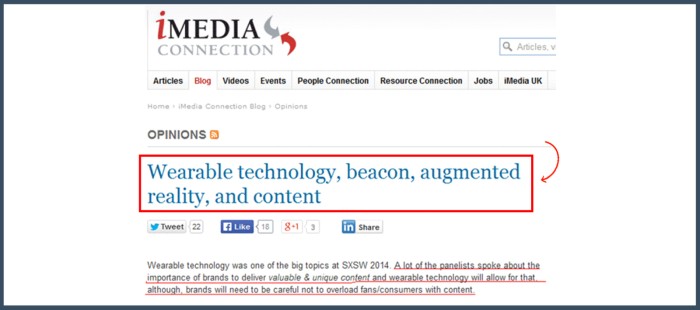
The above sentence is so long that it could make a whole paragraph on its own. Also, it tries to present several pieces of information in the same sentence.
By the time the reader is done reading this sentence, their heads will be spinning. As a rule of thumb, it is best to use short sentences that convey a single piece of information.
It allows you to present information in small bits that readers can relate to, as opposed to huge chunks that cause confusion.
7. Copy That Revolves Around The Seller
Good copywriters understand their target audience and write content that helps solve the audience’s pain points. Bad copy focuses on telling the reader how great the brand is.
It offers little value to the audience. A great example (of a bad example) comes from Rareloop.
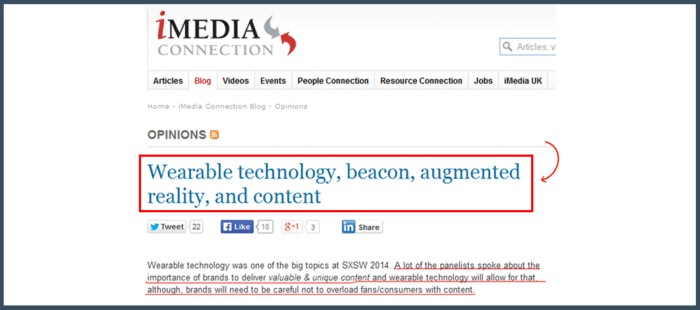
The above copy from Rareloop is not inviting at all. The headline goes, “ WE’RE DIGITAL ARTISANS.”
Aside from seeming like they are shouting, the headline doesn’t do much to attract the attention of the audience.
The copy proceeds to state that they are “an expert team, passionate about crafting bespoke websites and apps”. The brand just brags about how passionate their expert team is.
Clearly, the copy does not care about the reader’s problems. In the end, it fails to provide the audience with any value. After reading the copy, the reader is left wondering how the brand can help them.
Customers do not care how great a brand is if it does not add value to their lives. As if that is not enough damage, the brand goes on to publish a lame call to action “get to know us”.
Why would anyone want to know a team that does not add value to their lives? This just comes across as egotistical.
A great way to avoid the above mistake is to use more audience-centric writing. This shows readers that you care about their challenges.
Also, you need to communicate your value proposition clearly so the audience can gauge if your solution is the right fit for them.
8. Use Of Boring Stories
Stories make the copy engaging and fun to read. But in order for stories to be impactful, they should be captivating and relevant.
A great story also identifies a problem, makes it feel personal, and offers a solution. When done correctly, stories make copy feel more human.
Bad copywriting uses boring stories. Let’s study the example below of a story from Lego’s About section.
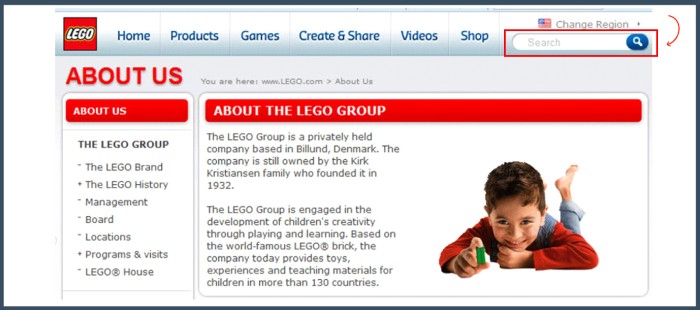
LEGO is a children’s toy manufacturing brand. Its About section provides details about the company ownership in the past and present.
It goes on to tell us that it’s engaged in the development of toys based on some famous LEGO brick and that it covers more than 130 countries.
First off, for a children’s toy brand, their story is bland and dull considering how vibrant and playful kids are. Clearly, the story does not relate to its target audience.
Secondly, the copy is a bit lengthy, so dividing it up into some sections could have made it more readable.
Alternatively, the brand could have highlighted important parts of their history to keep the story brief, enticing, and to the point.
That way, it becomes easier to tell the readers everything they need to know about the brand without lecturing them on boring details that may not be significant to children.
The bottom line is, when telling your brand’s story or any other story, keep it relevant to your audience and the problem at hand. At the end of your story, be sure to provide a solution to a specific pain point.
9. Poor Flow Of Ideas And Inconsistencies In Copy
Good copy uses the proper flow of ideas and remains consistent. Sometimes, it is easy to get lost in the details, which leads to conflicting ideas in the copy.
The result is usually confused readers who are unsure about what their next step should be. For instance, this copy for Nike’s recycled polyester is great, but inconsistent.
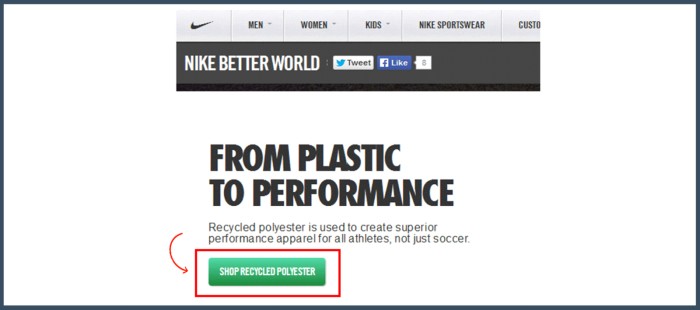
The copy states that “Recycled polyester is used to create superior performance apparel for all athletes, not just soccer.” A problem occurs towards the end of that sentence.
The copy goes from referring to athletes to soccer, yet soccer is not a type of athlete. Maybe the copywriter meant that the apparel was meant for all sports, not just soccer.
That is the problem with being inconsistent. Your readers will have to figure out what you actually had in mind.
However trivial the error above may seem, it could ruin your copy. So it is a good idea to read your copy over and over to get rid of errors.
10. Insensitivity To The Audience’s Emotions
Sensitivity is a crucial ingredient when it comes to writing copy that resonates with the reader’s emotions. Bad copywriting usually turns a blind eye to what the audience might be feeling.
As a result, an otherwise great copy may backfire. An example of insensitive copy comes from Adidas.
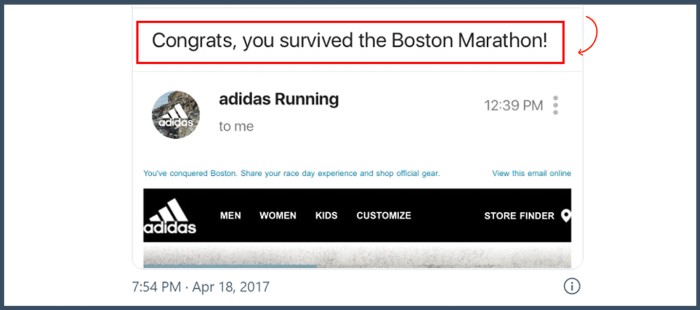
Following the 2017 Boston Marathon, Adidas sent the finishers of the race a congratulatory message for surviving the marathon.
As a sponsor of this event, the brand may have had good intentions, but the timing and wording of this message came across as insensitive.
During the marathon, a bombing occurred, and 3 participants lost their lives in the event, while more than 200 others survived injuries.
As such, the Adidas email subject line was completely uncalled for. It made it seem like Adidas didn’t care at all what the survivors were going through.
Many followers of this famous brand did not like the email and suggested the brand rethink the subject line. Finally, the brand apologized for being insensitive, but the damage was already done.
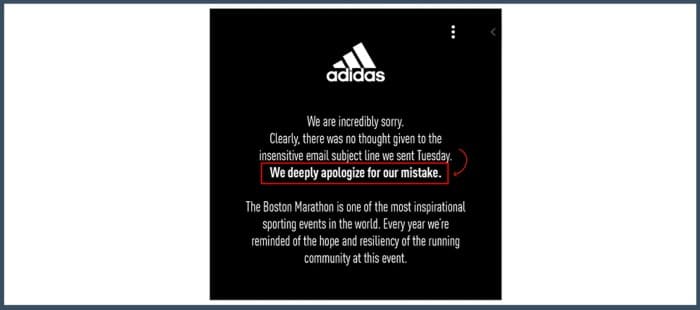
When dealing with sensitive issues, it is wise to be emphatic. It shows your audience that you care about their challenges and are willing to offer suitable solutions.
In exchange, the audience will find it easier to trust you. A trusting audience is more likely to convert compared to a skeptical one.
Wrapping It Up
Bad copywriting isn’t entirely useless. You can learn a lot of crucial dos and don’ts by studying the mistakes of others.
From the examples above, we can see that it is best to avoid grammar mistakes, inconsistencies in your copy, and using boring stories.
Although making errors is inevitable, learning from common mistakes that lead to bad copywriting is a great step toward good copywriting.
Keep learning and making improvements to sharpen your copywriting skills.
